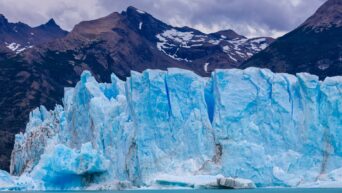A glacier the size of Florida is warming up.
In the icy south of the Earth is the Western Antarctic Ice Sheet, a segment of the massive continental ice sheet that covers the western part of Antarctica. Part of this ice sheet is a 74,000 square mile mass named the Thwaites Glacier. That’s about the size of Florida. Now, what exactly do you think would happen if an ice mass the size of Florida were to melt? Well, don’t worry (and by that I mean do worry), because we might find out soon.
According to a recent survey of the Thwaites Glacier, the water around its grounding zone has warmed to 3.6 degrees Fahrenheit above freezing. A glacier’s grounding zone is the point where it slides off physical bedrock into the ocean. The more the glacier warms, the more ice slides into the ocean. The more ice slides into the ocean, the more sea levels rise. This is a bad thing.
Based on estimates by the surveyors, if the entire Thwaites Glacier were to collapse into the ocean, the global sea level would rise by about two feet. That’s already pretty bad, but to make matters worse, the Thwaites Glacier acts as a sort of “brake” for the rest of the Western Antarctic Ice Sheet. If it were to disappear, the rest of the ice sheet would begin sliding into the ocean after it, which could raise the sea level an additional six feet.
The gradual melting of the Thwaites Glacier already accounts for around 4% of global ocean rising. About a year ago, a massive cavity was found under the glacier’s mass. The surveyors believe we may already be past the point of no return; it’s only a matter of time before the ice cracks.

































